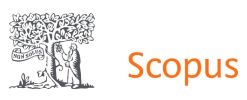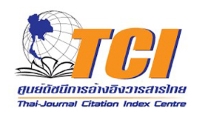JOURNAL DETAIL
Phenotypic Marking of Cordyceps militaris Fruiting-Bodies and Their Cordycepin Production
Paper Type |
Contributed Paper |
Title |
Phenotypic Marking of Cordyceps militaris Fruiting-Bodies and Their Cordycepin Production |
Author |
Ting-chi Wen, Ji-chuan Kang*, Kevin D. Hyde, Guang-rong Li, Chao Kang and Xu Chen |
Email |
bcec.jckang@gzu.edu.cn |
|
Abstract: Cordyceps militaris has recently been used as a functional food in China and is commonly used as a Traditional Chinese Medicine. The formation of C. militaris fruiting bodies is unstable and is a limiting factor industrial production. Fruiting body formation and quantities of adenine, adenosine and cordycepin differed significantly between the phenotypes. Orange chrome colonies produced fruiting bodies more readily, as compared to those of lighter colour. Cordycepin production generally decreased in orange chrome to apricot orange and white colonies. There was, however, no relationship between cordycepin production and colony colour in the slow growing strains. The yields of fruiting body from primary strains were higher than the isolates from colony sector mutations. On the contrary, cordycepin production in most isolates from the colony sector mutations were higher than the primary strains. Therefore isolates from colony sector mutation in C. militaris could be used for screening high-yield strains in cordycepin production. Colony colour is one of the markers for detecting fruiting body and cordycepin production in C. militaris. The strategies used for screening high-yield strains could have a wide application in fungal biotechnology. |
|
Start & End Page |
846 - 857 |
Received Date |
2013-09-18 |
Revised Date |
|
Accepted Date |
2014-01-15 |
Full Text |
Download |
Keyword |
Cordyceps militaris , cordycepin, fruiting body, phenotypes marking, solid-state fermentation |
Volume |
Vol.41 No.4 (SPECIAL ISSUE 1) |
DOI |
|
Citation |
Wen T., Kang* J., Hyde K.D., Li G., Kang C. and Chen X., Phenotypic Marking of Cordyceps militaris Fruiting-Bodies and Their Cordycepin Production, Chiang Mai Journal of Science, 2014; 41(4): 846-857. |
| View:1,011 Download:313 | |
RELATED ARTICLE
page: 420 - 428
Author:Doan Thi Phuong Thuy*, Tran Thi Ngoc Anh, Nguyen Thi Thanh Thuy, Phikul Intaparn, Tawat Tapingkae and Nguyen Thi Mai
Vol.48 No.2 (March 2021) View: 2,029 Download:1,098
page: 972 - 984
Author:Ting-Chi Wen [a]+, Chao Kang [b]+, Ze-Bing Meng [a], Yong-Bin Qi [a], Kevin D. Hyde [c, d] and Ji-Chuan Kang* [a]
Vol.43 No.5 (OCTOBER 2016) View: 1,186 Download:298
page: 331 - 338
Author:Pongrawee Nimnoi , Neelawan Pongsilp, Saisamorn Lumyong
Vol.42 No.2 (APRIL 2015) View: 893 Download:250
page: 858 - 872
Author:Ting-chi Wen, Cuang-rong Li, Ji-chuan Kang*,Chao Kang and Kevin D. Hyde
Vol.41 No.4 (SPECIAL ISSUE 1) View: 1,121 Download:577
Copyrights © Since 2021 All Rights Reserved by Chiang Mai Journal of Science










